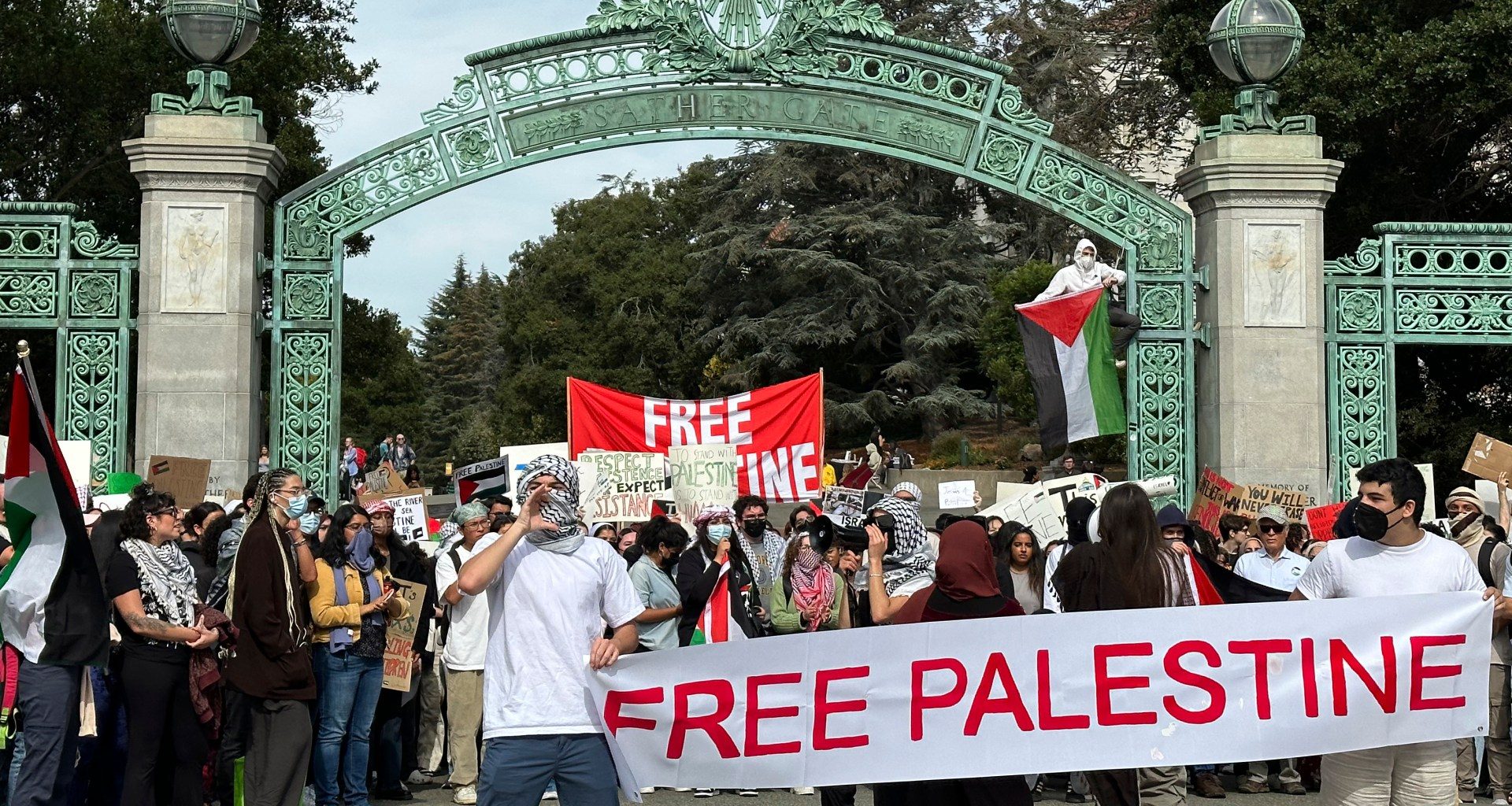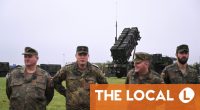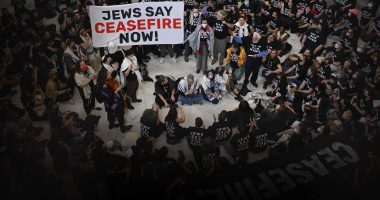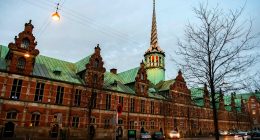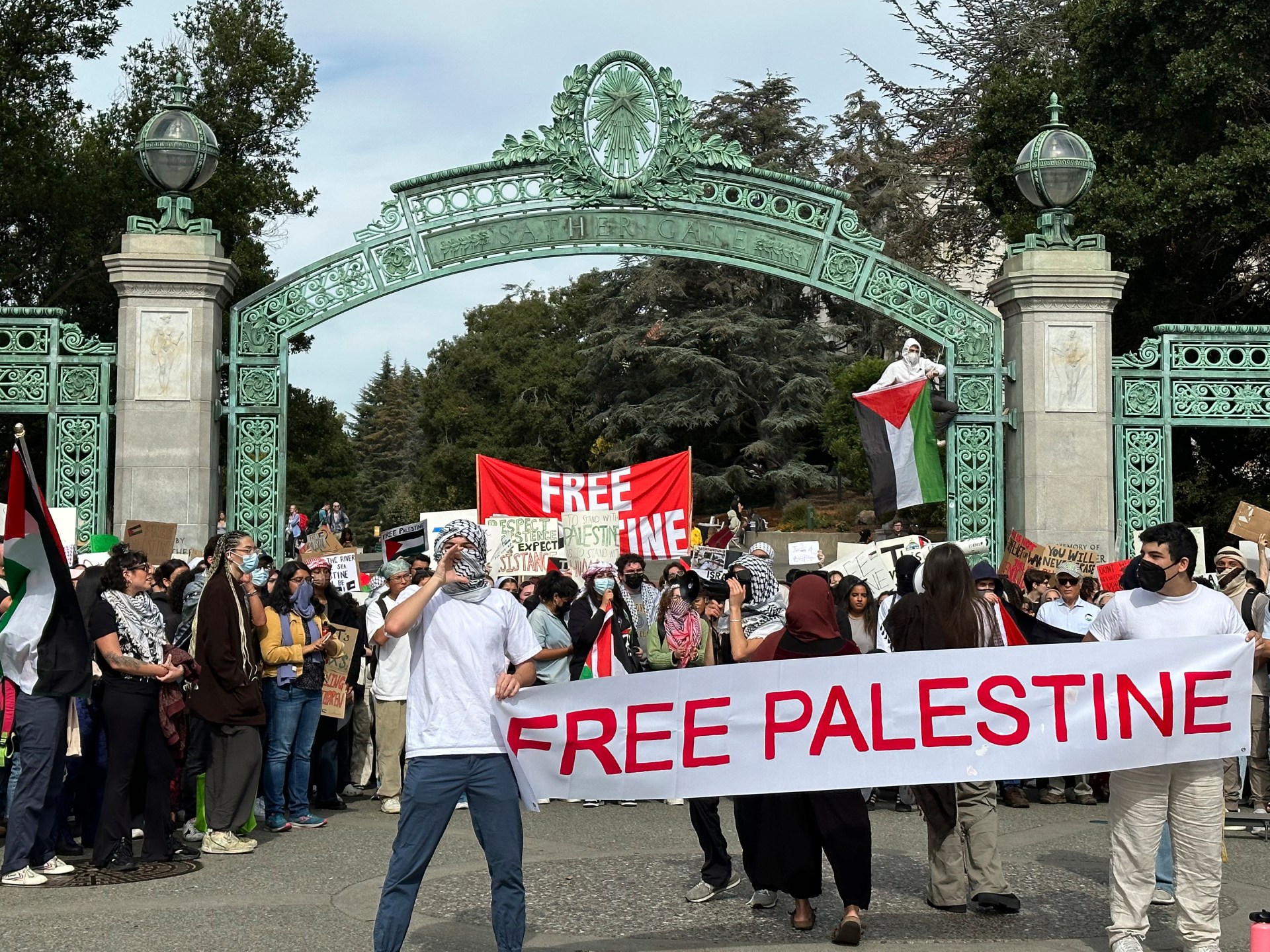
For more than five months now, students across the United States have been rallying in support of Palestinians as they face genocide at the hands of the Israeli army. It is increasingly clear that more and more young Americans view advocacy for Palestine in the same way as Angela Davis does, as “a moral litmus test for the world”.
Mobilisation is no easy task – students supporting Palestinian liberation have been stabbed, shot, run over and sprayed with chemicals used by the Israeli occupation forces. They have been suspended, arrested and disciplined. They have had to rely on their own labour and the limited funds they have been able to raise for their protest actions.
By contrast, pro-Israel students have well-established donor networks, campus Hillels, and the ear of mainstream media to amplify their complaints that pro-Palestinian activism is anti-Semitic.
College administrations, worried about donor money, have also bent over backwards to please powerful individuals and groups, who have denounced pro-Palestinian activism and have not hesitated to discipline students on their behalf.
Vastly out-resourced and under-protected, advocates for Palestine have become savvy and creative, building alliances with communities that cut across races, classes and religions and employing a broad range of tactics and strategies. Their actions range from long-term plans to spontaneous eruptions, and everything in between.
Some organising has already borne some fruit. In the University of California system, there have been some notable successes. At the University of California Davis, pro-Palestinian campaigning resulted in a historic student government vote on February 15 to heed the Boycott, Divestment, Sanctions (BDS) call. As a result, the student body will refrain from spending any of its $20m budget on any company on the BDS list.
On the same day, the Graduate Student Association at the University of California Los Angeles (UCLA) called for divestment from Israel. On February 20, the UCLA student government voted unanimously to demand that the university divest student fees from “apartheid, ethnic cleansing, and genocide”.
On February 29, the Associated Students of UC Riverside also passed a resolution to fully divest from companies complicit in Israel’s genocide of Palestinians in Gaza. On March 6, the Associated Students of UC San Diego also voted in favour of a divestment bill.
Elsewhere, results have been mixed. At Stanford University, where I teach, students managed to maintain an around-the-clock sit-in for 120 days, demanding the university denounce Israeli apartheid and genocide, support Palestinian students, identify anti-Palestinian biases in teaching and research, and implement divestment initiatives.
When the university abruptly demanded that the sit-in be dismantled, more than 500 students rallied to defend it with many staying overnight, daring the university to arrest them. While some administrators privately expressed some degree of sympathy, no concrete concessions have been made, so students have continued to demonstrate and disrupt campus life, and are mounting a campus-wide divestment campaign.
Although the Stanford administration has yet to make any meaningful changes, student organisers are quite aware of their achievements. “Obviously, it was a protest at the end of the day, but we also created a space for discourse. And it’s ironic because the university has been desperate to create a space like that, it has been desperate to create this kind of conversation – this was admitted to us by various administrators, including the president himself. What the sit-in did was do what the university had been trying to do,” Farah, a Stanford student organiser, told me in a recent interview for my podcast Speaking out of Place.
What both long-term campaigns and organic, eruptive takeovers have managed to do is to radically change campus environments. Besides the passionate and highly vocal exchanges between people with different views that we have seen at marches and demonstrations, deliberate and methodical divestment campaigns and protracted sit-ins have sustained conversations, debates and discussions over months.
Each of these actions involves bringing in guest speakers (often prominent Palestinian activists, artists and poets) that fill in gaps in education that US universities have been happy to leave unfilled. Students are therefore both learning from a broader spectrum of sources and are themselves serving to educate others.
In the months since October 7, the entire landscape of the US university has changed with regard to Palestine. Some have started to draw parallels with the antiwar student movement during the Vietnam War era. A report by a UC San Diego student newspaper about a pro-Palestine rally where more than 2,000 showed up said: “A turnout of this degree is unprecedented, even by the anti-Vietnam War student demonstrations in the 1960s and 70s.”
As someone who was a student at the University of California at Berkeley during the Vietnam War, and a participant in those demonstrations as well as in today’s rallies for Palestinian liberation, I am struck by some clear similarities.
First, in both cases, student protests challenged the mainstream media’s depiction of the wars and the official positions of their university administrations. Protest action has served to educate the public and expose the roles institutions of higher education play in national and global power dynamics. University administrators were confronted with their complicity in the wars and their purposeful obstruction of certain kinds of knowledge and learning and could not hide behind “sins of omission”.
Second, these protests aligned the struggles for Vietnamese liberation and Palestinian liberation with both domestic and international struggles and featured broad multiracial and multiethnic coalitions that link together the local, national and international. These connections have meant that even those at geographically isolated, and smaller institutions do not feel detached or alone, but part of something much bigger.
At the same time, I am struck by an important and impressive difference. American college students saw their personal lives as inextricably entangled in the Vietnam War. Many of us lost friends in Vietnam, some of us hid people avoiding the draft or federal investigation for their work in the movement. There was no lack of solidarity with the Vietnamese people, but there was not the same kind of focus on the personal that we see now with regard to the genocide in Gaza and the ethnic cleansing in the West Bank.
I never saw dozens and dozens of Vietnamese flags flying on campus, or other national symbols showcased by students like we see today. With flags, keffiyehs and other Palestinian symbols, students and other protesters are embodying Palestine in tremendously moving and powerful ways.
Beyond the consequences the genocide in Gaza might have on them personally, American college students are expressing historically unprecedented solidarity, empathy and care for the people of Palestine, and outrage that the United States has been a facilitator of Israel’s historical ethnic cleansing of Palestinians.
There is no turning back in terms of campus discourse on Palestine. The specifics of the struggle against genocide and apartheid in Palestine have gained strength and amplitude precisely because the sensibilities that were developed in the US and elsewhere since the Vietnam era regarding racism, police and state violence, and other forms of discrimination and cruelty, have become permanent parts in our cultural and political memory.
No right-wing assaults on “critical race theory”, “diversity”, or “inclusion” will change that, and no silencing of critics of Israel under the charge of “anti-Semitism” is going to last.
If anything, the passion, energy and commitment of today’s young people has rekindled the political activist spirit and established intergenerational alliances as the new norm.
While it is hard to predict with certainty whether these movements on university campuses will have an effect on the broader national political landscape, I think it is safe to say this: Each of these actions on campus has not only drawn the attention of the local community, it has also drawn its participation.
And the outside community consists not only of individuals – it includes unions, church groups and other civil society groups to force political change. At this point, over a 100 municipalities have called for a ceasefire, and at least 85 members of Congress have done the same. While change is happening, it is happening much too slowly, which is why the next months will see no end to or diminishment of student activism for Palestinian rights.
The views expressed in this article are the author’s own and do not necessarily reflect Al Jazeera’s editorial stance.
Read More: World News | Entertainment News | Celeb News
Aljazera

